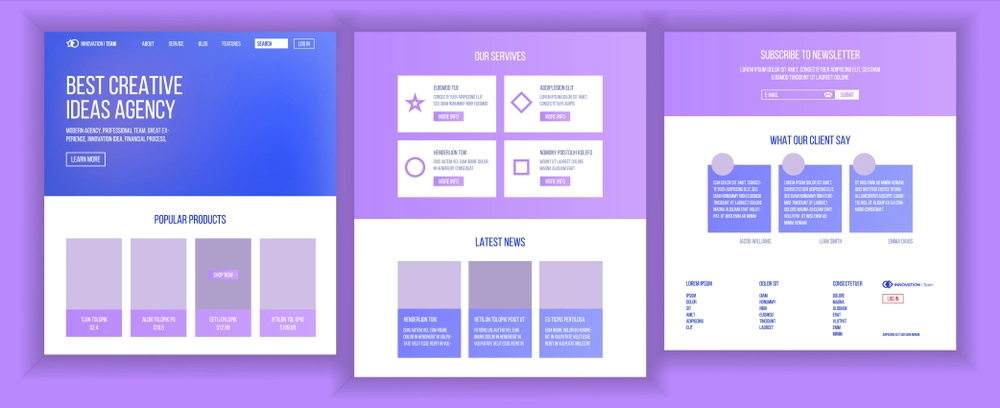Whether you are building or updating an existing website by 2023, pricing for web design and development services is one key consideration when planning. Prices can fluctuate significantly based on various variables, from the development team’s location and expertise to the project’s complexity and scope. This article will explore the average hourly cost associated with web design services in 2023. Additionally, we’ll discuss factors that impact pricing and budget guidelines to cover ongoing support and maintenance needs for such projects. Let’s dive deeper and discover how much web development will cost in 2023!

Average Hourly Rates for Web Development Services in 2023:
Assuming 2023 prices remain consistent with 2018 rates, hourly web development could range anywhere from $20-150 dollars an hour depending on its team of developers’ location, experience level and the technologies and tools necessary to complete the task.
Outside of team location and technology needs for web development projects, specific tools and technologies may also affect hourly rates for web design and development services. For instance, web developers with expertise in more specific technologies such as React JS or Node JS could receive higher hourly rates than those experienced with more prevalent and widely used techniques such as PHP HTML/CSS development.
Basic Vs Complex Website Project Cost: Basic vs Complex
Informational websites, or basic sites, are smaller in scope, providing essential details about a company or organization, like contact details and services offered at an economical cost ranging between $1,000 to $5,000 for construction.

Complex websites are more expansive, offering features such as E-commerce capabilities, custom databases and advanced user interfaces. Such projects typically cost between $5,000 to $50,000 or more, depending on individual needs and the features provided.
As part of your web-based project’s price estimation process, it is vital to consider your company’s needs and any specific features or functions necessary for its success. A basic website may suffice, while others require something more extensive to meet all their requirements fully.
Budget Strategies for Web Development in 2023
Web development can be expensive for any company, but there are ways to minimize costs without compromising quality. Here are six suggestions on how you can trim expenses when developing a website or app.
Start by developing a comprehensive strategy and scope of the work plan, outlining all your needs and goals before beginning development. This will allow you to determine the features essential for your project while avoiding unnecessary expenditures. Create a website design brief which details all requirements related to web creation/design projects.
Utilizing open-source software Like WordPress, Joomla, or Drupal can reduce development costs significantly.
Cost-Effective Offshore Locations for Web Development:
Outsourcing web development projects to Ukraine or Poland may prove cost-effective and enable you to save money on development expenses.
Pre-designed themes and templates will save both time and money in design expenses. By customizing only necessary features, pre-designed themes and templates can help save both time and money during design expenses. But beware: unnecessary customizations increase development costs exponentially!
Utilize an application for project management:
Using a project management tool will help reduce development costs significantly, as will using one to track progress and timelines. Factors Affecting Web Development Services There are eight factors which could affect Web development costs:
Location and Development Teams:
Cost of living and wage levels can affect Web development services’ hourly cost; countries with higher costs, such as Europe or North America, tend to charge more. Consequently, web development services in such areas cost more per hour.
Expertise and experience levels within a development team:
Developers with more knowledge and experience may charge higher hourly rates in exchange for services; however, full-stack web developers tend to spend less time working on each project and provide higher quality services essential for enterprise web projects.
Specific tools and technologies are necessary for the project:
Projects requiring special expertise with specific software frameworks, programming languages or technologies might incur higher hourly costs than projects employing more widely used and familiar solutions.
Complexity and scope:
Depending on the complexity and scope of a project, its duration could depend upon the time and resource requirements needed to complete it. This factor could ultimately impact the cost.
Designs and Branding:
The price of web development depends on costs associated with branding and design elements like designing a logo for custom usage and colours and layouts specific to each project.

Third-Party Integrations:
The price of web development tools can impact the costs associated with integrating third-party software or services such as payment gateways, analytics or any additional functions that fall outside the basic development services.
The level of customization required:
Customized solutions require time and resources, thus increasing costs.
The need for SEO and marketing:
Implementation of SEO and marketing plans could significantly increase development costs. This might involve optimizing your website’s structure, content and meta tags to be search-engine friendly; building backlinks; creating an ongoing content marketing plan to boost search engine rankings; and formulating an advertising campaign to draw customers directly to your site.
Budgeting for Ongoing Maintenance and Support in Web Development Services:
Maintenance is key to keeping a website current and operating efficiently. Still, its costs vary widely depending on its type and the amount of upkeep required. In this article, we’ll look at various website types and potential maintenance fees you might face.
Basic Websites:
Basic websites consist of only a few pages, such as the home page, About Us page or Contact page – the cost for maintaining such sites typically ranges between $30-50 per month.
Websites designed for E-Commerce:
E-commerce sites allow customers to purchase goods or services online, with maintenance costs typically running $50-100 monthly for such sites.
Custom websites:
Custom websites are tailored for a particular company or organization and typically feature more advanced features and functions. Average maintenance costs for custom websites range between $100-200 monthly.
Content Management System (CMS) websites:
CMS websites can be created using platforms such as WordPress, Joomla and Drupal; maintenance costs could range between $50-$100 monthly.
Web Sites for Social Networks:
Websites tailored specifically for engagement with social media, such as forums and message boards, require regular maintenance updates to remain up-to-date and attract users, with costs estimated between $50-$150 per month for maintenance fees.
However, these prices are estimates and may change according to your site’s needs and requirements. Inquire with a website maintenance provider about getting a quote before signing an agreement for website upkeep services. By understanding different kinds of websites and their related maintenance charges, you will be better equipped to make informed decisions regarding their online presence maintenance needs.
Sum up
Overall, web development costs vary dramatically depending on several variables such as location and knowledge of team members; project size; tools required for its completion; the complexity of the task at hand, tools used, the technology required etc. In 2023, hourly costs for web development services typically ranged between $20 to 150 dollars an hour, with simple sites typically developed between $1000 to $5,000 being created, while more complex websites could run between $5,000 to $50,000 or beyond.
Companies looking to minimize costs when creating websites may want to consider outsourcing development work overseas to low-cost locations, utilizing open-source software and pre-designed templates and themes from pre-loaded sources; using pre-approved templates instead of customizing features that aren’t necessary; as well as outsourcing features which require customization unless necessary. It is key that before beginning development, a clear outline is drawn of the scope, prioritizing features which need customizing, and using an application for project management to monitor progress and deadlines effectively.




